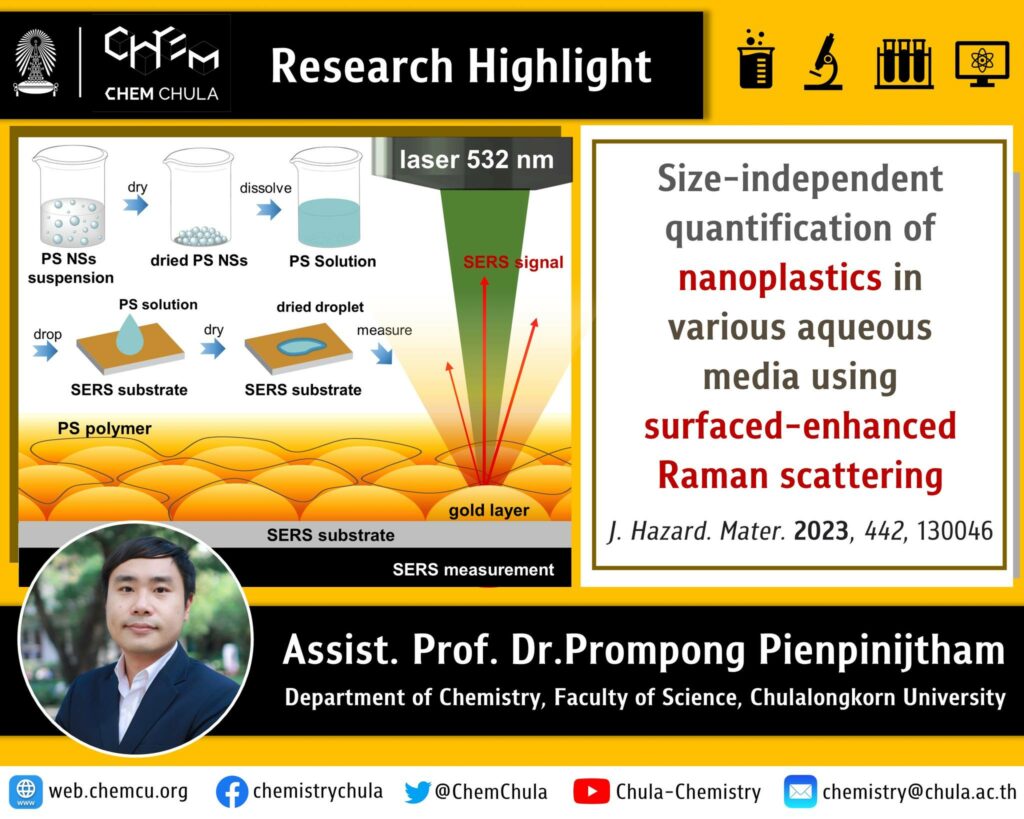Nanoplastics (NPLs) have the ability to absorb and transport dangerous substances (i.e., persistent organic pollutants, toxic microbes, and heavy metals). Somehow, these hazardous NPLs are eventually ingested by aquatic species and accumulate in our food chain, damaging the marine ecosystem and causing risks to our health via seafood and water consumption. The plastic size-dependent effect is the most challenging part of NPL quantification using surface-enhanced Raman scattering (SERS) because the SERS activity of NPLs corresponds to their size rather than their concentration. Consequently, a lack of SERS methods for quantifying NPLs in aquatic environments remains unsolved. However, using our designation protocol, the size-dependent effect generated from NPLs with different diameters can be fully eliminated, and the concentration of NPLs can be carried out. Moreover, coupled with the coffee-ring effect phenomenon, our SERS detection method can be performed to quantify NPLs at very low concentrations. Therefore, NPLs can be rapidly quantified to indicate their environmental problems.
- Prompong Pienpinijtham
- Boonphop Chaisrikhwun

